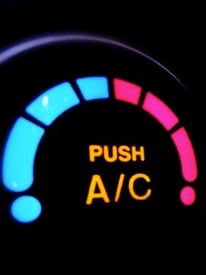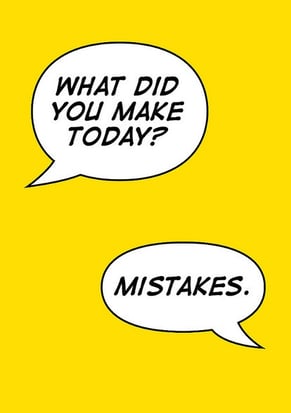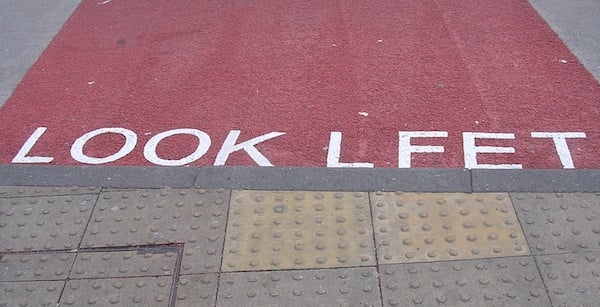
SAT Essay Samples | Low vs High-Scoring Examples
The SAT Essay is often used as an extra way to impress admissions officers with your overall academic preparedness. But what does a good essay look like vs a bad one? To make life easier, the College Board has provided some helpful SAT essay samples that you can study over.
Besides helping you get into college, here are a number of other SAT Essay benefits to consider .
SAT Essay Samples Prompt
Expect to see prompt directions like the ones below:
“As you read the passage below, consider how Paul Bogard uses:
- evidence, such as facts or examples, to support claims.
- reasoning to develop ideas and to connect claims and evidence.
- stylistic or persuasive elements, such as word choice or appeals to emotion, to add power to the ideas expressed.”
SAT Essay Samples Passage
“ Adapted from Paul Bogard, “Let There Be Dark.” ©2012 by Los Angeles Times. Originally published December 21, 2012.
At my family’s cabin on a Minnesota lake, I knew woods so dark that my hands disappeared before my eyes. I knew night skies in which meteors left smoky trails across sugary spreads of stars. But now, when 8 of 10 children born in the United States will never know a sky dark enough for the Milky Way, I worry we are rapidly losing night’s natural darkness before realizing its worth. This winter solstice, as we cheer the days’ gradual movement back toward light, let us also remember the irreplaceable value of darkness.
All life evolved to the steady rhythm of bright days and dark nights. Today, though, when we feel the closeness of nightfall, we reach quickly for a light switch. And too little darkness, meaning too much artificial light at night, spells trouble for all.
Already the World Health Organization classifies working the night shift as a probable human carcinogen, and the American Medical Association has voiced its unanimous support for “light pollution reduction efforts and glare reduction efforts at both the national and state levels.” Our bodies need darkness to produce the hormone melatonin, which keeps certain cancers from developing, and our bodies need darkness for sleep. Sleep disorders have been linked to diabetes, obesity, cardiovascular disease and depression, and recent research suggests one main cause of “short sleep” is “long light.” Whether we work at night or simply take our tablets, notebooks and smartphones to bed, there isn’t a place for this much artificial light in our lives.
The rest of the world depends on darkness as well, including nocturnal and crepuscular species of birds, insects, mammals, fish and reptiles. Some examples are well known—the 400 species of birds that migrate at night in North America, the sea turtles that come ashore to lay their eggs—and some are not, such as the bats that save American farmers billions in pest control and the moths that pollinate 80% of the world’s flora. Ecological light pollution is like the bulldozer of the night, wrecking habitat and disrupting ecosystems several billion years in the making. Simply put, without darkness, Earth’s ecology would collapse…
In today’s crowded, louder, more fast-paced world, night’s darkness can provide solitude, quiet and stillness, qualities increasingly in short supply. Every religious tradition has considered darkness invaluable for a soulful life, and the chance to witness the universe has inspired artists, philosophers and everyday stargazers since time began. In a world awash with electric light…how would Van Gogh have given the world his “Starry Night”? Who knows what this vision of the night sky might inspire in each of us, in our children or grandchildren?
Yet all over the world, our nights are growing brighter. In the United States and Western Europe, the amount of light in the sky increases an average of about 6% every year. Computer images of the United States at night, based on NASA photographs, show that what was a very dark country as recently as the 1950s is now nearly covered with a blanket of light. Much of this light is wasted energy, which means wasted dollars. Those of us over 35 are perhaps among the last generation to have known truly dark nights. Even the northern lake where I was lucky to spend my summers has seen its darkness diminish.
It doesn’t have to be this way. Light pollution is readily within our ability to solve, using new lighting technologies and shielding existing lights. Already, many cities and towns across North America and Europe are changing to LED streetlights, which offer dramatic possibilities for controlling wasted light. Other communities are finding success with simply turning off portions of their public lighting after midnight. Even Paris, the famed “city of light,” which already turns off its monument lighting after 1 a.m., will this summer start to require its shops, offices and public buildings to turn off lights after 2 a.m. Though primarily designed to save energy, such reductions in light will also go far in addressing light pollution. But we will never truly address the problem of light pollution until we become aware of the irreplaceable value and beauty of the darkness we are losing.”
SAT Essay Samples Directions
Here is how the essay directions will be worded format-wise on test day.
“Write an essay in which you explain how Paul Bogard builds an argument to persuade his audience that natural darkness should be preserved. In your essay, analyze how Bogard uses one or more of the features in the directions that precede the passage (or features of your own choice) to strengthen the logic and persuasiveness of his argument. Be sure that your analysis focuses on the most relevant features of the passage.
Your essay should not explain whether you agree with Bogard’s claims, but rather explain how Bogard builds an argument to persuade his audience.”
Essay Sample Response (Low Scoring)
“In “Let there be dark,” Paul Bogard talks about the importance of darkness.
Darkness is essential to humans. Bogard states, “Our bodies need darkness to produce the hormone melatonin, which keeps certain cancers from developing, and our bodies need darkness for sleep, sleep. Sleep disorders have been linked to diabetes, obesity, cardiovascular disease and depression and recent research suggests are main cause of “short sleep” is “long light.” Whether we work at night or simply take our tablets, notebooks and smartphones to bed, there isn’t a place for this much artificial light in our lives.” (Bogard 2). Here, Bogard talks about the importance of darkness to humans. Humans need darkness to sleep in order to be healthy.
Animals also need darkness. Bogard states, “The rest of the world depends on darkness as well, including nocturnal and crepuscular species of birds, insects, mammals, fish and reptiles. Some examples are well known—the 400 species of birds that migrate at night in North America, the sea turtles that come ashore to lay their eggs—and some are not, such as the bats that save American farmers billions in pest control and the moths that pollinate 80% of the world’s flora. Ecological light pollution is like the bulldozer of the night, wrecking habitat and disrupting ecosystems several billion years in the making. Simply put, without darkness, Earth’s ecology would collapse…” (Bogard 2). Here Bogard explains that animals, too, need darkness to survive.”
Essay Sample Response (High Scoring)
“In response to our world’s growing reliance on artificial light, writer Paul Bogard argues that natural darkness should be preserved in his article “Let There be dark”. He effectively builds his argument by using a personal anecdote, allusions to art and history, and rhetorical questions.
Bogard starts his article off by recounting a personal story – a summer spent on a Minnesota lake where there was “woods so dark that [his] hands disappeared before [his] eyes.” In telling this brief anecdote, Bogard challenges the audience to remember a time where they could fully amass themselves in natural darkness void of artificial light. By drawing in his readers with a personal encounter about night darkness, the author means to establish the potential for beauty, glamour, and awe-inspiring mystery that genuine darkness can possess. He builds his argument for the preservation of natural darkness by reminiscing for his readers a first-hand encounter that proves the “irreplaceable value of darkness.” This anecdote provides a baseline of sorts for readers to find credence with the author’s claims.
Bogard’s argument is also furthered by his use of allusion to art – Van Gogh’s “Starry Night” – and modern history – Paris’ reputation as “The City of Light”. By first referencing “Starry Night”, a painting generally considered to be undoubtedly beautiful, Bogard establishes that the natural magnificence of stars in a dark sky is definite. A world absent of excess artificial light could potentially hold the key to a grand, glorious night sky like Van Gogh’s according to the writer. This urges the readers to weigh the disadvantages of our world consumed by unnatural, vapid lighting. Furthermore, Bogard’s alludes to Paris as “the famed ‘city of light’”. He then goes on to state how Paris has taken steps to exercise more sustainable lighting practices. By doing this, Bogard creates a dichotomy between Paris’ traditionally alluded-to name and the reality of what Paris is becoming – no longer “the city of light”, but more so “the city of light…before 2 AM”. This furthers his line of argumentation because it shows how steps can be and are being taken to preserve natural darkness. It shows that even a city that is literally famous for being constantly lit can practically address light pollution in a manner that preserves the beauty of both the city itself and the universe as a whole.
Finally, Bogard makes subtle yet efficient use of rhetorical questioning to persuade his audience that natural darkness preservation is essential. He asks the readers to consider “what the vision of the night sky might inspire in each of us, in our children or grandchildren?” in a way that brutally plays to each of our emotions. By asking this question, Bogard draws out heartfelt ponderance from his readers about the affecting power of an untainted night sky. This rhetorical question tugs at the readers’ heartstrings; while the reader may have seen an unobscured night skyline before, the possibility that their child or grandchild will never get the chance sways them to see as Bogard sees. This strategy is definitively an appeal to pathos, forcing the audience to directly face an emotionally-charged inquiry that will surely spur some kind of response. By doing this, Bogard develops his argument, adding guttural power to the idea that the issue of maintaining natural darkness is relevant and multifaceted.
Writing as a reaction to his disappointment that artificial light has largely permeated the presence of natural darkness, Paul Bogard argues that we must preserve true, unaffected darkness. He builds this claim by making use of a personal anecdote, allusions, and rhetorical questioning.”
For more test strategies, college admissions, and scholarship application tips sign up for our FREE classes happening right now!
Related Articles

So You Think You Can Cheat on the Digital SAT?
Mar 26, 2024

Can You Take the SAT at Any Age?
Mar 19, 2024

A Comprehensive Digital SAT Prep Guide
Feb 27, 2024
Recent Posts
How long should you study for a test, how hard is the act, navigating the college admissions process: a comprehensive guide for parents, top 10 secrets to raise your child's score.
Join Prep Expert Founder and Perfect SAT Scorer Shaan Patel for this exclusive event!
$200 OFF COUPON CODE
Subscribe to our emails and get $200 OFF any Prep Expert Online Course.
Enter the coupon code SHARKTANK200 to save $200 OFF any Prep Expert Online Course!
By providing your email address, you agree to our Privacy Policy and Terms & Conditions
No thanks, I’d prefer to pay full price.

Choose Your Test
Sat / act prep online guides and tips, the most reliable sat essay template and format.
SAT Writing

And then, if you've chosen to take it, there's the essay. Or, more accurately, "To finish up, there's the essay." Because the last thing you'll do on the SAT (with Essay) is read a passage and write an essay analyzing its argument, all in 50 minutes.
How can you even begin to read a passage, analyze it, and write an essay about it in 50 minutes? What SAT essay structure should you follow? Is there an SAT essay format that’ll score you a top score for sure? Read on to find out the answers to these questions!
feature image credit: Pencil by Laddir Laddir , used under CC BY-SA 2.0 /Cropped from original.
UPDATE: SAT Essay No Longer Offered
In January 2021, the College Board announced that after June 2021, it would no longer offer the Essay portion of the SAT (except at schools who opt in during School Day Testing). It is now no longer possible to take the SAT Essay, unless your school is one of the small number who choose to offer it during SAT School Day Testing.
While most colleges had already made SAT Essay scores optional, this move by the College Board means no colleges now require the SAT Essay. It will also likely lead to additional college application changes such not looking at essay scores at all for the SAT or ACT, as well as potentially requiring additional writing samples for placement.
What does the end of the SAT Essay mean for your college applications? Check out our article on the College Board's SAT Essay decision for everything you need to know.
What 5 Things Does Your SAT Essay Need?
To build a great SAT essay template, you need to know what it needs to include. Here are the five most important elements of any SAT essay:
#1: An Introduction
The first impression the grader will have of your writing is your essay introduction. Don't just jump right into discussing argumentative techniques — i ntroduce your analysis with a statement of what the author is arguing in the prompt. You should then briefly mention the specific persuasive techniques the author used that you'll be discussing in your essay.
#2: A Clear Thesis Statement
I've separated this out as its own point because it’s so important. You must express a precise claim about what the author's point is and what techniques she uses to argue her point; otherwise, you're not answering the essay question correctly.
This cannot be emphasized enough: SAT essay graders do not care what your stance is on the issue . They care that you understand and explain how the author argues her point.
The SAT essay task is designed for you to demonstrate that you can analyze the structure of an argument and its affect on the reader with clear and coherent reasoning. Take this example prompt, for instance:
Write an essay in which you explain how Eric Klinenberg builds an argument to persuade his audience that Americans need to greatly reduce their reliance on air-conditioning. In your essay, analyze how Klinenberg uses one or more of the features listed in the box above (or features of your own choice) to strengthen the logic and persuasiveness of his argument. Be sure that your analysis focuses on the most relevant features of the passage.
A bad thesis leaves you unclear on what features of the author's arguments you'll be analyzing in the essay:
The author tries to enforce to his audience by telling that air conditioning has negative effects.
This thesis doesn’t specify what features of the argument you'll be discussing, or even what Klinenberg's specific views are. It's just a (grammatically flawed) sentence that hints at Klinenberg's argument. Compare to a good thesis for the same prompt:
Through consideration of quantitative data, exploring possible counterarguments to his position, and judicious use of striking phrasings and words, Klinenberg strengthens both the logic and persuasiveness of his argument that Americans need to greatly reduce their reliance on air conditioning.
The above thesis clearly specifies both what the author's argument is and what aspects of the argument will be analyzed in the essay . If you want more practice writing strong thesis statements, use our complete list of SAT essay prompts as inspiration.
#3: Specific Examples That Support Your Point
To support your thesis, you'll need to draw on specific examples from the passage of the techniques you claim the author uses. Make sure to provide enough information for each example to make it clear how it is relevant to your thesis - and stop there. No need to paraphrase the entire passage, or explain why you agree or disagree with the author's argument - write enough that the reader can understand what your example is and be done.
#4: Explanations of the Examples That Support Your Point
It isn't enough to just summarize or paraphrase specific excerpts taken from the passage and call it a day. In each example paragraph, you must not only include details about a example, but also include an explanation of how each example demonstrates an argument technique and why it is persuasive. For instance, let's say you were planning on discussing how the author uses vivid language to persuade the reader to agree with him. Yes, you'd need to start by quoting parts of the passage where the author uses vivid language, but you then also need to explain why that example demonstrates vivid language and why it would be persuasive to the reader.
#5: A Conclusion
Your conclusion should restate your thesis and briefly mention the examples you wrote about in your essay (and how they supported your thesis ). If you haven't done it already in your essay, this is NOT the place to write about a broader context, or to contradict yourself, or to add further examples you didn't discuss. End on a strong note.
Ready to go beyond just reading about the SAT? Then you'll love the free five-day trial for our SAT Complete Prep program . Designed and written by PrepScholar SAT experts , our SAT program customizes to your skill level in over 40 subskills so that you can focus your studying on what will get you the biggest score gains.
Click on the button below to try it out!

What’s the Best SAT Essay Format?
Now that you know what has to be in your essay, how do you fit it all in? It’s not enough to just throw in a thesis and some examples on paper and expect what you write to be an essay. You need to be organized, and when you have to organize an essay under pressure, the generic five paragraph essay format is your friend .
Just as with every five-paragraph essay you've written at school, your SAT essay should have an introduction, 2-3 body paragraphs (one paragraph for each argumentative technique you discuss), and a conclusion . Your thesis statement (which techniques you'll be analyzing in the essay) should go in both your introduction and your conclusion, with slightly different wording. And even if you're just discussing multiple examples of the same technique being used in the passage, you’ll still probably need two body paragraphs for organizational purposes.

Sock Drawer by noricum , used under CC BY-SA 2.0 /Cropped from original

SAT Essay Template Outline
So how do you write an SAT essays in this five paragraph format? I've created an SAT essay template that you can use as a guide to structure your own SAT essays, based on the following prompt:
Your essay should not explain whether you agree with Klinenberg’s claims, but rather explain how Klinenberg builds an argument to persuade his audience.
You can read the full text of the passage associated with the prompt (part of Practice Test 5) via our complete collection of official SAT essay prompts .
In the following SAT essay format, I've broken down an SAT essay into introduction, example paragraphs, and conclusion . Since I'm writing in response to a specific prompt, some of the information and facts in the template will only be useful for answering this specific prompt (although you should feel free to look for and write about the argumentative techniques I discuss in any of your essays). When responding to any SAT question, however, you can and should use the same format and structure for your own essays. To help you out, I've bolded structural words an d phrases in the below template.

Introduction (2-5 sentences)
Begin with a statement that explains the central claim of the passage's argument; this statement should provide some context for what you’ll be discussing in the essay. It can be brief if you’re short on time (1-2 sentences):
In his commentary, Eric Klinenberg conveys a strong stance against the rampant and short-sighted utilization of air conditioning (AC) nationwide. He believes AC is a massive unnecessary energy drain, and he implores the reader to reconsider the implications of constant cool comfort.
Next comes the all-important thesis statement that includes a clear outlining of what aspects of the author's argument you'll be discussing . You can be very specific (e.g. "statistics about air-conditioning usage in the US") or more vague (e.g. "quantitative data") here - the important part is that you'll be supporting your opinion with proof (1-2 sentences).
To buttress his argument, Klinenberg deftly employs quantitative data, acknowledgment of counterarguments, and vivid language.
Sample SAT essay introduction
In his commentary, Eric Klinenberg conveys a strong stance against the rampant and short-sighted utilization of air conditioning (AC) nationwide. He believes AC is a massive unnecessary energy drain, and he implores the reader to reconsider the implications of constant cool comfort. To buttress his argument, Klinenberg deftly employs quantitative data, acknowledgment of counterarguments, and vivid language.
Example 1 (6-10 sentences)
Introduce your first example with some kind of transition (1 sentence).
In his introductory paragraph, the author points to AC usage statistics to illustrate the grave magnitude of our hedonistic climate control.
In this case, the writer linked this body paragraph to the introduction by explaining how his example (AC usage statistics) relates to one of the persuasive techniques he'll be discussing (statistics): it is an example of the harm created by overuse of air-conditioning.
Next, provide relevant information about when and how in the passage the author uses this persuasive technique (4-7 sentences). Be sure to paraphrase or directly quote the passage for the strongest evidence.
He shares that “Americans use twice as much energy…as we did 20 years ago, and more than the rest of the world’s nations combined.” These staggering statements immediately give the reader pause, forcing an internal dialogue about their significant. Clearly, in the past 20 years, the American population has come nowhere close to doubling - and yet, AC energy use has doubled. This can only mean utilization per person has skyrocketed. Furthermore , the American population can comprise no more than 10% of the world’s population (400 million to the world’s 6 billion) - and yet we use more AC energy than the rest of the world. This leads to another profound inference - each American may use almost 10 times more AC energy as the average non-American. These conclusions are grave and thought-provoking.
Finally, explain how this example works to strengthen the author's argument (3-4 sentences).
By introducing incontrovertible data, Klinenberg empowers the reader to reason though her own arguments and formulate her own conclusions. The rhetorical consequence is that the reader independently and actively agrees with Klinenberg’s thesis, rather than being a passive unengaged audience member. By the virtue of her own logic, the reader is compelled to agree with Klinenberg.
Sample SAT essay body paragraph (1)
In his introductory paragraph , the author points to AC usage statistics to illustrate the grave magnitude of our hedonistic climate control. He shares that “Americans use twice as much energy…as we did 20 years ago, and more than the rest of the world’s nations combined.” These staggering statements immediately give the reader pause, forcing an internal dialogue about their significant. Clearly, in the past 20 years, the American population has come nowhere close to doubling - and yet, AC energy use has doubled. This can only mean utilization per person has skyrocketed. Furthermore , the American population can comprise no more than 10% of the world’s population (400 million to the world’s 6 billion) - and yet we use more AC energy than the rest of the world. This leads to another profound inference - each American may use almost 10 times more AC energy as the average non-American. These conclusions are grave and thought-provoking. By introducing incontrovertible data, Klinenberg empowers the reader to reason though her own arguments and formulate her own conclusions. The rhetorical consequence is that the reader independently and actively agrees with Klinenberg’s thesis, rather than being a passive unengaged audience member. By the virtue of her own logic, the reader is compelled to agree with Klinenberg.

Example 2 (6-10 sentences)
Transition from the previous paragraph into this example (1 sentence).
Quickly after this data-driven introduction , Klinenberg effectively addresses potential counterarguments to his thesis.
Provide at least one specific example of how the author uses the persuasive technique you're discussing in this paragraph (2-5 sentences).
He acknowledges that there are clear valid situations for AC use - to protect the “lives of old, sick, and frail people,” “farm workers who work in sunbaked fields,” and “workers who might otherwise wilt in searing temperatures.” By justifying several legitimate uses of air conditioning, the author heads off his most reflexive critics.
Explain how and why this example persuades the reader of the author's opinion. (3-4 sentences).
An incoming reader who has just absorbed Klinenberg’s thesis would naturally have objections - if left unaddressed, these objections would have left a continuous mental roar, obscuring the absorption of further arguments. Instead , Klinenberg quells the most common objection with a swift riposte, stressing that he is not a maniacal anti-AC militant, intent on dismantling the AC-industrial complex. With this addressed, the reader can continue further, satisfied that Klinenberg is likely to be somewhat well-reasoned and objective. Ultimately, this facilitates acceptance of his central thesis .
Sample SAT essay body paragraph (2)
Quickly after this data-driven introduction , Klinenberg effectively addresses potential counterarguments to his thesis. He acknowledges that there are clear valid situations for AC use - to protect the “lives of old, sick, and frail people,” “farm workers who work in sunbaked fields,” and “workers who might otherwise wilt in searing temperatures.” By justifying several legitimate uses of air conditioning, the author heads off his most reflexive critics. An incoming reader who has just absorbed Klinenberg’s thesis would naturally have objections - if left unaddressed, these objections would have left a continuous mental roar, obscuring the absorption of further arguments. Instead , Klinenberg quells the most common objection with a swift riposte, stressing that he is not a maniacal anti-AC militant, intent on dismantling the AC-industrial complex. With this addressed, the reader can continue further, satisfied that Klinenberg is likely to be somewhat well-reasoned and objective. Ultimately, this facilitates acceptance of his central thesis.
Example 3 (Optional, 6-10 sentences)
This paragraph is in the same format as Example 2. You should only include a third example if you think it’s strong and will help (rather than detract from) your point.
In the case of the essay we've been using as the backbone of this template, the author had the time to write a third example. Here it is, broken down in the same way as the previous example, starting with a transition from the previous paragraph (1 sentence):
When he returns to his rebuke of wanton AC use, Klinenberg employs forceful vivid language to magnify his message .
He emphasizes the blind excess of air conditioner use, comparing cooled homes to “igloos” circulating “arctic air.” Then, to underscore the unforeseen consequences of such behavior, he slides to the other extreme of the temperature spectrum, conjuring the image of “burning through fossil fuels in suicidal fashion.” This visual imagery shakes the reader from complacency. Most likely, the reader has been the beneficiary of AC use. “So, what’s the big deal?” By comparing malls to igloos and excessive energy use to suicide, Klinenberg magnifies the severity of the problem.
We are forced to consider our comfortable abode as a frigid arctic dwelling, prompting the natural question of whether we really do need our hones cold enough to see our breath indoors. The natural conclusion, in turn, is that we do not. By employing effective visual imagery, Klinenberg takes the reader through another internal dialogue, resulting in stronger acceptance of his message .
Sample SAT essay body paragraph (3)
When he returns to his rebuke of wanton AC use, Klinenberg employs forceful vivid language to magnify his message . He emphasizes the blind excess of air conditioner use, comparing cooled homes to “igloos” circulating “arctic air.” Then, to underscore the unforeseen consequences of such behavior, he slides to the other extreme of the temperature spectrum, conjuring the image of “burning through fossil fuels in suicidal fashion.” This visual imagery shakes the reader from complacency. Most likely, the reader has been the beneficiary of AC use. “So, what’s the big deal?” By comparing malls to igloos and excessive energy use to suicide, Klinenberg magnifies the severity of the problem. We are forced to consider our comfortable abode as a frigid arctic dwelling, prompting the natural question of whether we really do need our hones cold enough to see our breath indoors. The natural conclusion, in turn, is that we do not. By employing effective visual imagery, Klinenberg takes the reader through another internal dialogue, resulting in stronger acceptance of his message .

Conclusion (2-4 sentences)
Reiterate your thesis, using different words (1-2 sentences).
Overall, the passage effectively weaves quantitative data, acknowledgment of counterarguments, and vivid language to rebuke the excesses of air conditioning. The reader leaves with the strong conclusion that perhaps a bit of moderation can do the world some good.
You may also choose to mention the examples you used if you have time and if it adds anything (1-2 sentences). In this case, the author of the essay chose not to.
Sample SAT essay conclusion
The final sat essay template.
Here's what the final SAT essay template looks like (key structural words and phrases bolded):
This essay contains some inferences about what the reader may experience (e.g. that the reader is shaken from complacency by the image of suicidally burning through fossil fuels). It also has some minor grammatical and spelling errors.
Since there is no way to survey the mind of every reader and see how the majority of them react to the author's arguments, however, graders will go along with any reasonable inferences about how a reader would react to the author's argument. As far as grammatical, spelling, punctuation, or sentence structure issues, the rule is even simpler: if the error doesn't make your essay too difficult to read and understand, the people who score your essay will ignore these errors.

The essay graders will not fault you for factual inaccuracies or minor grammar/punctuation/spelling errors.
SAT Essay Format: A Quick Recap
To summarize, your SAT essay should stick to the following format:
- Start with a statement about what the author of the passage is arguing.
- Thesis with a clear statement about what argumentative techniques you'll be examining in the essay.
- Transition from introduction to a specific example that illustrates an argumentative technique.
- Brief description of when the author uses that technique and how they employ it.
- Explanation for why that example strengthens the passage author's argument
- Transition from previous paragraph to a specific example that illustrates a second argumentative technique.
- Transition from previous paragraph to a specific example that illustrates a third argumentative technique.
- Restate your thesis (in different words) and mention the examples you used to support it in your essay.

What’s Next?
Worried about putting this template into practice? Watch us write an SAT essay, step by step, to learn how to do it yourself!
Can you write a killer SAT essay in less than a page? Find out how SAT essay length affects your score here .
Want to make sure you're not leaving any stone unturned in your SAT essay prep? Read our 15 SAT Essay tips to improve your score .
Want to improve your SAT score by 160 points?
Check out our best-in-class online SAT prep program . We guarantee your money back if you don't improve your SAT score by 160 points or more.
Our program is entirely online, and it customizes what you study to your strengths and weaknesses . If you liked this SAT Essay lesson, you'll love our program. Along with more detailed lessons, you'll get your SAT essays hand-graded by a master instructor who will give you customized feedback on how you can improve. We'll also give you a step-by-step program to follow so you'll never be confused about what to study next.
Check out our 5-day free trial:

Laura graduated magna cum laude from Wellesley College with a BA in Music and Psychology, and earned a Master's degree in Composition from the Longy School of Music of Bard College. She scored 99 percentile scores on the SAT and GRE and loves advising students on how to excel in high school.
Student and Parent Forum
Our new student and parent forum, at ExpertHub.PrepScholar.com , allow you to interact with your peers and the PrepScholar staff. See how other students and parents are navigating high school, college, and the college admissions process. Ask questions; get answers.

Ask a Question Below
Have any questions about this article or other topics? Ask below and we'll reply!
Improve With Our Famous Guides
- For All Students
The 5 Strategies You Must Be Using to Improve 160+ SAT Points
How to Get a Perfect 1600, by a Perfect Scorer
Series: How to Get 800 on Each SAT Section:
Score 800 on SAT Math
Score 800 on SAT Reading
Score 800 on SAT Writing
Series: How to Get to 600 on Each SAT Section:
Score 600 on SAT Math
Score 600 on SAT Reading
Score 600 on SAT Writing
Free Complete Official SAT Practice Tests
What SAT Target Score Should You Be Aiming For?
15 Strategies to Improve Your SAT Essay
The 5 Strategies You Must Be Using to Improve 4+ ACT Points
How to Get a Perfect 36 ACT, by a Perfect Scorer
Series: How to Get 36 on Each ACT Section:
36 on ACT English
36 on ACT Math
36 on ACT Reading
36 on ACT Science
Series: How to Get to 24 on Each ACT Section:
24 on ACT English
24 on ACT Math
24 on ACT Reading
24 on ACT Science
What ACT target score should you be aiming for?
ACT Vocabulary You Must Know
ACT Writing: 15 Tips to Raise Your Essay Score
How to Get Into Harvard and the Ivy League
How to Get a Perfect 4.0 GPA
How to Write an Amazing College Essay
What Exactly Are Colleges Looking For?
Is the ACT easier than the SAT? A Comprehensive Guide
Should you retake your SAT or ACT?
When should you take the SAT or ACT?
Stay Informed
Get the latest articles and test prep tips!
Looking for Graduate School Test Prep?
Check out our top-rated graduate blogs here:
GRE Online Prep Blog
GMAT Online Prep Blog
TOEFL Online Prep Blog
Holly R. "I am absolutely overjoyed and cannot thank you enough for helping me!”

IMAGES
VIDEO